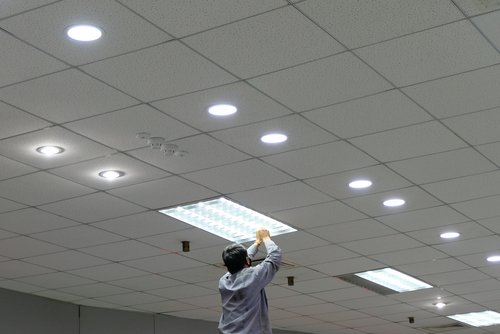As the modern workplace has evolved to become more flexible in recent years, the building and facility teams behind these spaces have been pushed to adapt alongside them. With the day-to-day uncertainties of the COVID era largely in the rear view, most organizations have implemented policies to give direction to their workforce on the company’s desired in-person attendance policies.

While these policies have been welcomed, they have ultimately created a new series of challenges for the facility and corporate real estate teams who are tasked with planning around erratic demands on various workspaces and assets.
For facilities managers, planning maintenance is one of the recurring obstacles associated with fluctuations in office attendance. Being able to schedule work orders during windows of low demand is crucial in the operation of today’s workplaces. However, these quiet periods can be difficult to forecast without the right insights.
Understanding the behavior of employees and visitors, such as their bookings, work order requests, and occupancy data, helps facilities management teams know which time slots are most opportune for fulfilling maintenance requests. Let’s unpack some of the barriers around maintenance in the workplace today and explore how employee behavior can be leveraged to streamline the completion of work orders.
The Most Popular Flexible Work Policies
According to the research compiled as part of Eptura’s quarterly Workplace Index Report, a large majority (95%) of flexible work policies fall into one or more of six common categories: split-week (35%), at-will (24%), office-first (12%), designated teams for hybrid (12%), remote-first (8%), and week-by-week (4%).
Each of these policies carries its own obstacles as it relates to forecasting and completing maintenance requests. The at-will work policy, for example, gives employees the highest level of autonomy by letting them determine which days and times they want to be in the physical workspace. Consequently, this working style is among the most challenging for facilities management teams to plan around given the range of choices available to the individual employees.
Under these flexible working arrangements, facilities management teams require more context to assist in planning their maintenance routines. They need a better understanding of how employees are actually using the workspaces and assets that have been made available to them. These teams need insights specific to their business and their working arrangements that can help inform upcoming facility maintenance decisions.
The Patterns Worth Tracking
Facilities management teams can unlock those missing insights by measuring key employee behaviors. Asset bookings, which include any desk and technology reservations made by employees, provide facilities management teams with a near-term picture of office traffic. If a particular week looks to be busy given the number of bookings that have been scheduled, teams can plan work orders to avoid areas of high traffic.
While understanding upcoming occupancy is beneficial, it’s equally important for facilities managers to have a grasp on occupancy trends over time. Monitoring the usage of workspaces and assets over a period of several months or quarters can show how the workforce has actually been engaging with the workplace. In some cases, employee reservations may not align directly with the actual observed trends in office occupancy and asset use.
In tandem with the projections from asset bookings and historical office occupancy data, tracking daily work order requests can help to reveal windows when certain workspaces may be less crowded. This enables maintenance teams to choose quiet times to complete work orders that minimize disruptions to the workplace and allow building occupants to best utilize their collaborative time in the office.
New Priorities in a New Era of Work
Once facilities management teams understand when to complete work orders, the next step is to determine which ones to prioritize. With the prominence and variety of flexible working arrangements, facility priorities have shifted greatly in recent years.
There’s an added pressure on businesses to deliver a high-quality experience for their employees that will only continue to mount as demand on workspaces increases with more people returning to the office.
Prior to 2020, when many participants of a meeting were in-person, having a conference room with a camera and audio equipment that worked wasn’t deemed a critical ticket. With today’s requirements for a seamless experience between in-office and remote meeting participants, a ticket involving conference room connectivity would now be treated as a high-priority item for many organizations.
Robust facilities management tools allow teams to differentiate between high- and low-priority requests to best support the flexible workforce and ensure the most pressing items are completed ahead of the busiest or most important days of workspace occupancy.
The Future of Facility Maintenance
Choreographing maintenance decisions by monitoring attendance data will become a delicate art as facilities management teams seek to optimize the use of resources for their workplaces. It takes more than just a glance at the building’s future desk reservations or the past week’s occupancy numbers.
By understanding the broader connections between maintenance requests and employee behavior, organizations gain a better understanding of their workspaces and can streamline the completion of work orders to help meet the evolving expectations of the flexible workforce.

Paul Phillips is the Chief Technology Officer at global worktech company Eptura. Phillips is highly experienced in building and managing teams that have engineered systems across multiple sectors for businesses of all sizes. He has extensive knowledge of software as a service focusing on data to drive platform, product, and team development, and deliver actionable insights to customers using technology.
